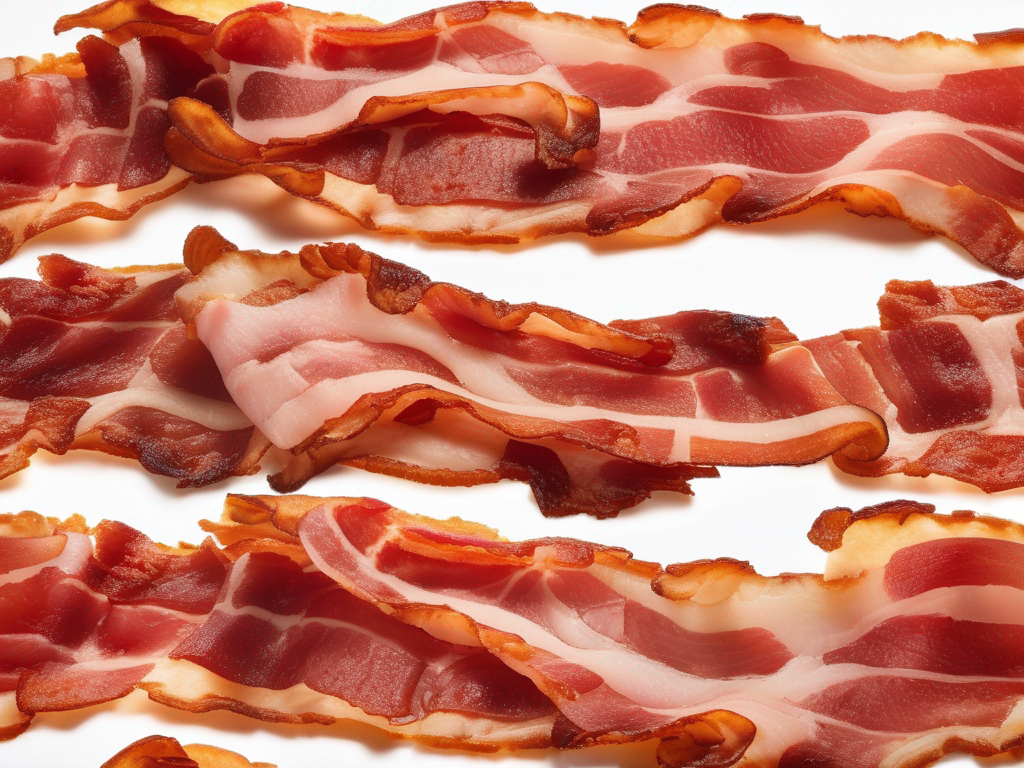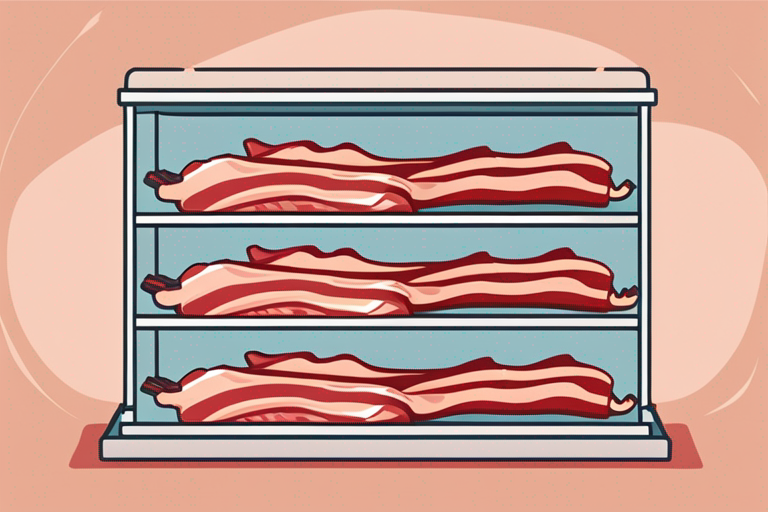
Maximizing the Shelf Life of Bacon: Tips for Safe Storage and Enjoyment
Get Your Free Food Safety Cheat Sheet
30 most common foods with instant answers. Print it and stick it on your fridge—completely free!
Maximizing the Shelf Life of Bacon: Tips for Safe Storage and Enjoyment
Bacon is a beloved breakfast staple that can add a savory crunch to a variety of dishes, from salads to sandwiches. However, like all perishable foods, bacon has a limited shelf life that can be affected by factors such as temperature, packaging, and storage conditions. To ensure that your bacon stays fresh and safe to eat for as long as possible, it's important to follow proper food safety guidelines. In this comprehensive guide, we'll explore the best practices for extending the shelf life of bacon while maintaining its quality and flavor. (Bacon)
Understanding the Shelf Life of Bacon
Bacon is a cured meat product made from pork belly that has been salted and smoked. The curing process helps to preserve the bacon and gives it its distinctive flavor. When properly stored, bacon can have a shelf life of several weeks, depending on various factors. Here are some key points to keep in mind:
Factors Affecting Bacon Shelf Life
-
Packaging: Bacon is typically sold in vacuum-sealed packages or wrapped in plastic. The packaging plays a crucial role in preserving the bacon and preventing contamination.
-
Storage Temperature: Bacon should be kept refrigerated at a temperature of 40°F (4°C) or below to slow down bacterial growth and maintain quality.
-
Storage Duration: The longer bacon is stored, the more its quality and flavor may deteriorate. It's best to consume bacon within a reasonable timeframe.
-
Quality of Bacon: High-quality bacon that is fresh and properly handled will have a longer shelf life compared to bacon that is past its prime.
Best Practices for Storing Bacon
Proper storage is essential for maintaining the quality and safety of bacon. Follow these tips to maximize the shelf life of your bacon:
Refrigeration
-
Store in the Original Packaging: Keep bacon in its original packaging to protect it from exposure to air and moisture.
-
Use a Refrigerator Thermometer: Ensure that your refrigerator is set to the proper temperature of 40°F (4°C) or below.
-
Refrigerator Placement: Store bacon in the coldest part of the refrigerator, such as the meat drawer or on the bottom shelf.
-
Avoid Cross-Contamination: Store bacon away from ready-to-eat foods to prevent the spread of bacteria.
Freezing
-
Freeze Unopened Packages: If you won't be using the bacon within a week, consider freezing it in its original packaging.
-
Wrap Properly: For long-term storage, wrap the original packaging in aluminum foil or plastic wrap to prevent freezer burn.
-
Label and Date: Clearly label the bacon with the date it was frozen to ensure you use it within a reasonable timeframe.
Thawing
-
Thaw in the Refrigerator: For best results, thaw frozen bacon in the refrigerator overnight rather than at room temperature.
-
Use Quickly: Once thawed, bacon should be used within 1-2 days for optimal quality.
Signs of Spoiled Bacon
Despite your best efforts to store bacon properly, it's essential to be able to recognize signs of spoilage. Here are some indicators that bacon may be past its prime:
Visual Signs
-
Discoloration: Bacon that has turned gray or greenish in color should be discarded.
-
Sliminess: If the bacon feels slimy or sticky to the touch, it may be spoiled.
Smell and Texture
-
Off Odor: Spoiled bacon may have a sour or rancid odor.
-
Texture Changes: Bacon that feels slimy, excessively dry, or sticky is likely spoiled.
If you notice any of these signs, it's best to err on the side of caution and discard the bacon to prevent foodborne illness.
Conclusion
By understanding the factors that affect the shelf life of bacon and following proper storage guidelines, you can enjoy this delicious meat product safely and deliciously. Remember to refrigerate or freeze bacon promptly, monitor its quality, and practice good food safety habits. With these tips in mind, you can savor the flavor of bacon while minimizing waste and ensuring your family's well-being. Learn more about bacon and its culinary uses to make the most of this versatile ingredient. (Bacon)
Related Posts
Here are some other articles you might find helpful:
- The Ultimate Guide to Understanding the Shelf Life of Bacon
- The Complete Guide to Bacon Use By Date
- The Ultimate Guide to Use By Date on Bacon
- The Ultimate Guide to Bacon Expiry Date
- How Long Is Bacon Good After Sell By Date

Authoritative Food Safety References
These agencies and university labs inform every tip and health precaution we publish.
USDA FoodKeeper – Cold Storage Guidelines
Official refrigerator, freezer, and pantry timelines maintained by the U.S. Department of Agriculture.
Visit USDA FoodKeeperFDA Produce Safety Rule & Grower Guidance
Field-to-fridge handling practices that prevent contamination of fruits, vegetables, and leafy greens.
Visit FDA Produce SafetyCDC Foodborne Illness Prevention Hub
Surveillance-backed guidance on pathogens, symptoms, and steps to reduce foodborne illness risk.
Visit CDC Food SafetyUC Davis Postharvest Technology Center
University research detailing optimal storage atmospheres for produce after harvest.
Visit UC Davis PostharvestPenn State Extension – Home Food Preservation & Safety
Peer-reviewed extension bulletins on safe canning, chilling, and reheating practices.
Visit Penn State ExtensionHow long can bacon be stored in the refrigerator?
Can bacon be frozen for long-term storage?
What is the best way to thaw frozen bacon?
Can bacon be left out at room temperature?
How can I tell if bacon has gone bad?
Get Your Free Food Safety Cheat Sheet
30 most common foods with instant answers. Print it and stick it on your fridge—completely free! Want more? Upgrade to the complete guide with 70+ foods.
Scan your food directly and get instant safety info using our AI-powered camera feature.